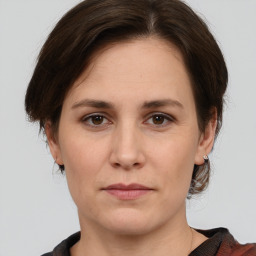Over the years, globalization increased the volatility and uncertainties in the external market, as now-a-days, firms are operate at international level which rises up the level of competition. In the corporations, top-managers have power and authority to devise different plans, strategies and policies in relation with proper and effective management of regular functioning. They use distinguish financial techniques and tools for making viable decisions like costing, budgeting, ratio analysis for the strategic financial evaluation, variance analysis and so forth. This report is prepared to guide that how different tools can be used to construct smarter plans and strategies for maximizing business performance and financial status.
TASK 1 Financial Statement Analysis
A. Calculation of ratios
Ratio evaluation technique is the most often used way to analyze various aspects of company’s performance and financial position i.e. efficiency, solvency, liquidity and so on. It is a quantitative analysis method that is helpful to evaluate the relationship in various components of the financial statements; income statement and balance sheet as well.
You Share Your Assignment Ideas
We write it for you!
Most Affordable Assignment Service
Any Subject, Any Format, Any Deadline
Order Now View Samples
Profitability ratios:
This ratio provides a quick indication to the mangers about the effectiveness of corporate functioning denoting that whether Senkyo Sdn Bhd has generated positive return or not on their sales. In 2015, GP an NP ratio dropped down to 48.73% and 11.83% shows that company needs to make cost-control and revenue maximization decisions through marketing, quality assurance techniques and others to improve net return (Jami and Bahar, 2016). ROSF and ROCE also came down to 30.93% & 18.77% which depicts that Senkyo Sdn. Bhd. generated less return  on shareholder equity & total capital employed.
Liquidity ratios:
In 2015, Senkyo Sdn. Bhd’s CR and QR goes up to 5.50 & 1.26 times, although improved ratio is good, still, CR exceed the standard of 2.00 which is a sign of ineffective utilization of resources. However, quick ratio is around target of 1.00 to 1.26 due to very high inventory balance, therefore, company’s manager needs to create decisions in relation with the optimum resource utilization (Goldmann, 2017).
Efficiencyratios:
Stock turnover ratio declined to 0.93, as a result, inventory holding days goes up to 391.07Â which is a poor sign and reflects slow movement of stock into sales. However, receivable turnover ratio goes declined to 14.20 which in turn increase collection days from 16.21 to 25.70 indicates slow collection from debtors which affect cash management strategies in an adverse manner. Similarly, non-current assets turnover ratio came down from 6.76 to 5.07 times reflects ineffective use of assets (Chiaramonte and Casu, 2016). Firm must make strategic decisions for enhancing the resource utilization efficiency for the growth and success.
Solvencyratios:
Debt to equity ratio came down from 1.65 to 1.86 because firm repaid their shareholders fund to a great extent in comparison to the repayment of long-term borrowings. It indicates higher risk because of heavy debt uses and also it goes beyond the industrial standard of 0.50:1. Hence, first must minimize their debt use and maximize equity source for the effective capital structure decisions (Ratio analysis, 2016).
B. Qualitative information for enhancing business performance
Ratio analysis only helps to analyze quantitative information, however, corporations like Senkyo Sdn Bhd also needs to evaluate their qualitative performance in order to make viable decisions for the growth & success. In such regards, following information is helpful for taking better decisions, mentioned below:
Customer satisfaction:
Senkyo Sdn Bhd can examine the satisfaction level of their clients. It can be evaluated using customer compliant rate, satisfaction score and so on. Rising satisfaction of the customers is a good sign of delivery of quality services whereas ineffective services indicate negative performance (Yoke Mui, Ahmad and Nabavi, 2016).
Technological advancement:Â
Using latest, new and upgraded technologies maximize competitive strength of the business. Therefore, business needs to make growth plans and strategies using latest techniques.
Employee Satisfaction:
Satisfied workers works at a high level of efficiency and serve top-quality services to the customers. It is because; they are extremely motivated, inspired and encouraged to give superior quality goods & services to the public.
Environmental performance:
Senkyo offer their services in the society, therefore, it is a social responsibility of the firm to minimize environmental hazards, like wastage and emission of harmful gases by following environmental policies, standards and rules.
Task 2 Cost Volume Profit Analysis
(A). Calculation of break-even point in dollar sales
Cost volume profit (CVP) analysis is a tool of marginal costing which is used to examine the cost and profit relationship at different sales volume. Break-even point is the critical and most important aspect of CVP technique that is helpful to determine that level at where sales becomes equal to the cost at nil return (Bergo and et.al., 2016). In accordance with the stated scenario, Linen Fasterners Sdn Bhd prepares three kinds of clothing fasteners, Velcro, Metal and Nylon in Klang at different selling prices and variable cost. It is essential for the firm to identify the total sales volume at where its total generated revenues from the three items becomes equal to the amount of expenditures incurred (Santos Almada, de Souza and Laia, 2016).
Break-even point (BEP) (In dollar) = Total Fixed cost/Profit volume ratio (PVR)
PVR/Contribution to sales ratio = Total contribution/total sales*100
Contribution = Total sales – Total variable cost
|
Â
|
Velcro
|
Metal
|
Nylon
|
Total
|
|
Sales (selling price * sales units)
|
165000
|
300000
|
340000
|
805000
|
|
Variable cost (Variable cost per unit*total units)
|
125000
|
140000
|
100000
|
365000
|
|
Contribution (sales-variable cost)
|
40000
|
160000
|
240000
|
440000
|
PVR = 440,000/805,000*100
PVR = 54.66%
|
Calculation of Break-even point (BEP)
|
|
Total fixed cost (TFC)
|
400000
|
|
PVR
|
54.66%
|
|
BEP ( In dollar value)
|
(400,000/54.66%) = 731796.6
|
Linen Fasterners Sdn Bhd must generate minimum sales of 731,796.6RM through offering the three products to achieve maximum capacity utilization efficiency and beyond this level, it will generate favourable return.
(B). (i) Calculation of break-even point in units for each product
|
Items
|
Sales
|
Variable cost
|
Contribution margin
|
|
Velcro
|
1.65
|
1.25
|
0.4
|
|
Metal
|
1.5
|
0.7
|
0.8
|
|
Nylon
|
0.85
|
0.25
|
0.6
|
|
Total
|
4
|
2.2
|
1.8
|
Â
|
Calculation of fixed cost on each product
|
|
Items
|
Fixed cost on each product
|
Common fixed cost
|
Total fixed cost
|
Contribution per unit (CPU)
|
BEP units (TFC/CPU)
|
|
Velcro
|
20000
|
240000
|
260000
|
0.4
|
50000 units
|
|
Metal
|
80000
|
240000
|
320000
|
0.8
|
100000 units
|
|
Nylon
|
60000
|
240000
|
300000
|
0.6
|
100000 units
|
|
Total
|
160000
|
Â
|
Â
|
1.8
|
250000 units
|
Â
According to the results, it is examined that to achieve break-even point, Linen Fasterners has to sell 50,000, 100,000 and 100,000 units totalled to 250,000 units.
(ii) Calculation of overall profit of a company at BEP sales
|
Calculation of profitability
|
|
Sales
|
Units
|
Sales price per unit
|
Total sales
|
|
Velcro
|
50000
|
1.65
|
82500
|
|
Metal
|
100000
|
1.5
|
150000
|
|
Nylon
|
100000
|
0.85
|
85000
|
|
Total sales
|
Â
|
Â
|
317500
|
|
Less: Variable cost
|
Â
|
Â
|
Â
|
|
Velcro
|
50000
|
1.25
|
62500
|
|
Metal
|
100000
|
0.7
|
70000
|
|
Nylon
|
100000
|
0.25
|
25000
|
|
Total variable cost
|
Â
|
Â
|
157500
|
|
Contribution
|
Â
|
Â
|
160000
|
|
Less: Total fixed cost
|
Â
|
Â
|
160000
|
|
Profit/loss
|
Â
|
Â
|
0
|
As already discussed, that BEP is the point where firm has zero return because of equal value of revenues and expenditures. It can be easily evident from the above statement as in this, at BEP units of sales in each item, profit is computed nil. If company sell more units then it will definitely generate return otherwise, will have loss (Dopson and Hayes, 2016).
(iii) Calculation of overall profit or sales at drop the Velcro and Metal products
|
Particulars
|
Amount (RM)
|
|
sales
|
340000
|
|
Less: variable cost
|
100000
|
|
Contribution
|
240000
|
|
less: Fixed cost
|
300000
|
|
Profit/loss
|
-60000
|
If Linen Fasteners sell only Nyoln items and abundant both the other goods, then, it will have business loss amounted to 60,000RM. Â Therefore, it can be suggested to the decisions-makers not to drop the Velcro and Metal items and continue its production in future period.
(iv) Preparation of segmented income statement
|
Particulars
|
Velcro (RM)
|
Metal (RM)
|
Nylon (RM)
|
Total (RM)
|
|
Sales
|
165000
|
300000
|
340000
|
805000
|
|
Less: variable cost
|
125000
|
140000
|
100000
|
365000
|
|
Contribution
|
40000
|
160000
|
240000
|
440000
|
|
less: Fixed cost
|
20000
|
80000
|
60000
|
160000
|
|
Product margin
|
20000
|
80000
|
180000
|
280000
|
|
Less: common fixed cost
|
Â
|
Â
|
Â
|
240000
|
|
Net profitability/loss
|
Â
|
Â
|
Â
|
40000
|
As per the profitability statement, it becomes clear that firm will have a positive return of 40,000 RM at the current level of sales.
Task 3 Short Term Decisions Making
(A) Closing divisions decisions of Tiles
Konstruck Sdn Bhd offers three kinds of products to the constructors that are blocks, bricks and tiles. Its income statement has been provided and as per this, operating income for the reported year is computed to 210,000RM. Out of three products, only blocks and bricks generated favorable return of 150,000RM and 230,000 RM whilst Tiles brought loss worth 45,000RM (Ahmad, 2016). This is the reason why managers are intending to disclose the production of Tiles as it will encourage saving by dismissal of line supervisor’s salary of 35,000RM and depreciation of 10,000RM totaled to 45,000RM. The viability of the decision can be examined here as follows:
BEP at the total production
BEP (RM)Â = Total Fixed Cost (TFC)/Profit Volume Ratio (PVR)
= (125,000 + 245,000)/(580,000/1450,000)*100
= 370,000/40%
= 925,000RM
BEP after discontinuance of Tiles
= (125,000 + 190,000)/(570,000/1300,000)*100
= 315,000/43.85%
= 718,421RM
As per the results, it become clear that if Konstruck Sdn Bhd’s managers eliminate Tiles from its production portfolio than, it will drive upward change in PVR from 40% to 43.85%. Moreover, BEP will come down from 925,000RM to 718,421RM. Lower BEP and high PVR indicates favorable position for the firm, therefore, it is clear Tiles product can be eliminated as it will drive good return to the business.
More Resources:Â
(B). Qualitative factors required for decision-making purpose
In removal of an item from the goods portfolio, companies not only need to consider only the quantitative factors i.e. cost, profit, sales etc, managers also have to pay focus on the qualitative factors before a decision on whether to keep or drop Tiles production, described hereunder:
- In case, where Konstruck’s customers are extremely satisfied from the Tiles product and demand this in high volume, then, it becomes essential for the companies not to shut down the goods because it will drop down its consumer base. More importantly, if such buyers also purchase other goods like Bricks and blocks, then, it can be advised to the firm not to drop the Tiles production (Yoke Mui, Ahmad and Nabavi, 2016). Thus, the impact of discontinuing decisions on other products also must be examined by the management.
- If in case, it is a possibility that in future, Tiles demand will go up, then, although, currently, firm is having loss, still, they must continue the production so as to get the benefits of larger sales value in the forthcoming years.
- Before making a shut down decision, managers must evaluate that whether resources has been utilized optimally or not. It is because, it may be possible that only the ineffective utilization is the reason for loss incur, so, by putting necessary amendments in the policies and strategies, firm can make better decisions and convert loss into profit without and drop decisions. Â
(C). Impact of Tile’s shut down decisions on Blocks and Brick’s salesÂ
As per the cited scenario, it is clearly mentioned that consumer buy all the items together, therefore, if Konstruck Sdn Bhd does not produce Tiles, then they will buy the remaining items elsewhere results in declining the Blocks sales and variable cost by 10% and Bricks by 8%.
|
Particular
|
Blocks
|
Bricks
|
Total
|
|
Sales
|
450
|
736
|
1186
|
|
Less: variable cost
|
225
|
441.6
|
666.6
|
|
Contribution
|
225
|
294.4
|
519.4
|
|
Less: Direct fixed cost
|
Â
|
Â
|
Â
|
|
    Advertising
|
10
|
10
|
20
|
|
    Salaries
|
37
|
40
|
77
|
|
    Depreciation
|
53
|
40
|
93
|
|
     Total direct expenses
|
100
|
90
|
190
|
|
Product margin
|
125
|
204.4
|
329.4
|
|
Less: common fixed  expenses
|
Â
|
Â
|
125
|
|
Operating income
|
Â
|
Â
|
204.4
|
Â
According to the computed results, it can be seen that if both the other products sales dropped down by 10% and 8%, then net operating income of the business will be 204,400RM which is below the current profitability of 210,000RM. Thus, it is considered better advise to not to shut down the production of Tiles and keep the Tile product line (Yoke Mui, Ahmad and Nabavi, 2016).
TASK 4 Standard Costing And Various Analysis
(A) Direct material variance
|
Particulars
|
Actual
|
Standard
|
|
Â
|
Type A
|
Type B
|
Type A
|
Type B
|
|
Actual material qty (kg)
|
5000
|
10000
|
Â
|
Â
|
|
Material consumed
|
3700
|
7800
|
4240
|
8480
|
|
Actual material price
|
0.53
|
0.40
|
0.5
|
0.42
|
Â
|
Type of variance
|
Formula
|
Type of variance
|
|
Material price variance (MPV)
|
Actual quantity used *actual price - actual quantity*standard price
|
Â
|
|
Type A
|
(3700*0.53)-(40*53*2*0.5)
|
Â
|
|
Â
|
-159
|
Adverse
|
|
Type B
|
(7800*0.40)-(8480*0.42)
|
Â
|
|
Â
|
-441.6
|
Adverse
|
|
Â
|
Â
|
Â
|
|
Material quantity variance (MQV)
|
(Standard quantity-actual quantity)*standard price
|
Â
|
|
Type A
|
(4240-3700)*0.50
|
Â
|
|
Â
|
270
|
Favorable
|
|
Type B
|
(8480-7800)*0.42
|
Â
|
|
Â
|
285.6
|
Favorable
|
|
Material purchase price variance
|
Actual quantity purchased*actual price - actual quantity*standard price
|
Â
|
|
Type A
|
(5000*0.53)-(4240*0.50)
|
Â
|
|
Â
|
530
|
Favorable
|
|
Type B
|
(10000*0.40)-(8480*0.42)
|
Â
|
|
Â
|
438.4
|
Favorable
|
(B) Direct labour variance
|
Type of variance
|
Formula
|
Type of variance
|
|
Labor rate variance (LRV)
|
(Standard rate - actual rate)*actual hours
|
Â
|
|
Â
|
(9-11.5)*165
|
Â
|
|
Â
|
-412.5
|
Adverse
|
|
Â
|
Â
|
Â
|
|
Labor efficiency variance  (LEV)
|
(Standard hour-actual hour)*standard rate
|
Â
|
|
Â
|
(240-165)*9
|
Â
|
|
Â
|
675
|
Favorable
|
(C) Actual cost of client application
|
Actual cost of client's application
|
|
Particulars
|
Â
|
Amount
|
|
Actual material cost
|
Â
|
Â
|
|
Type A
|
1961
|
Â
|
|
Type B
|
3120
|
Â
|
|
Total material cost
|
Â
|
5081
|
|
Labor cost
|
Â
|
1897.5
|
|
Total cost
|
Â
|
6978.5
|
As per the scenario, total bill was reported to 40 per application means totalled to (40*53*6) = 12,720RM whilst its cost derived to 6978.5. Thus, it is clear that project was successful that will drive positive return amount to 5741.5RM.
(D) Analysis of the variance
On the basis of the founded results, it is clear that on both the fertilisers, firm paid exceeded price worth 0.50 and 0.42/kg may be due to shortage of material in the market as a result, supplier charged high prices. In contrast, effective utilisation of material help to reduce the actual quantity of fertilisers to 3700 and 7800 kg respectively, as a result, favourable material quantity variance has been derived to 270 and 285.6. In addition, Cahaya Enterprise paid higher wages to the labours for spreading the fertilisers which caused negative LRV for Type A to 412.5. It indicates that firm must put several techniques for cost control to get positive results (Ritter, Schmidt and Vance, 2016). Customer complaints may be caused due to ineffective quality of fertilisers at high cost for weed control.
(E) Should the fertiliser services must be continue or not
As per the findings, it must be suggested to the firm to find out the suppliers who offer material at cheaper rates, so that, adverse MPV can be eliminated. Moreover, it must recruit the required labor force at cheaper wages rate to produce goods at less cost. Further, cost-curtailment decisions required to be taken to achieve success.
Appendix
Appendix: 1. Ratio analysis
|
Â
|
Â
|
Senkyo Sdn bhd. (Amount in RM)
|
|
Particulars
|
Formula
|
2014
|
2015
|
|
Profitability ratios
|
Â
|
Â
|
Â
|
|
Gross profit
|
Â
|
233000
|
173000
|
|
Net profits before tax
|
Â
|
85000
|
42000
|
|
revenues
|
Â
|
473000
|
355000
|
|
Gross profit margin
|
(Gross profit/sales)*100
|
49.26%
|
48.73%
|
|
Net profit margin before tax
|
(Net profit before tax /sales)*100
|
17.97%
|
11.83%
|
|
Operating profit
|
Â
|
100000
|
52000
|
|
Capital employed
|
Total assets - current liabilities
|
297000
|
277000
|
|
Net profit after taxes
|
Â
|
55000
|
30000
|
|
Shareholder equity
|
Â
|
112000
|
97000
|
|
Return on capital employed
|
Operating profit/capital employed*100
|
33.67%
|
18.77%
|
|
Return on shareholder equity
|
(net profit/shareholders equity)*100
|
49.11%
|
30.93%
|
|
Liquidity ratios
|
Â
|
Â
|
Â
|
|
Current assets
|
Â
|
289000
|
253000
|
|
current liabilities
|
Â
|
62000
|
46000
|
|
Inventory
|
Â
|
220000
|
195000
|
|
Current ratio
|
(Current assets/current liabilities)
|
4.66
|
5.50
|
|
Quick ratio/acid test ratio
|
(Current assets-stock)/current liabilities
|
1.11
|
1.26
|
|
Efficiency ratios
|
Â
|
Â
|
Â
|
|
Creditors
|
Â
|
62000
|
46000
|
|
Cost of sales
|
Â
|
240000
|
182000
|
|
Inventory
|
Â
|
220000
|
195000
|
|
Accounts receivables
|
Â
|
21000
|
25000
|
|
Non-current assets
|
Â
|
70000
|
70000
|
|
Inventory turnover ratio
|
COGS/Inventory
|
1.09
|
0.93
|
|
Days inventory outstanding (days)
|
365/Inventory turnover ratio
|
334.58
|
391.07
|
|
Receivable turnover ratio
|
Sales/Accounting receivables
|
22.52
|
14.20
|
|
Average collection period
|
365/Accounts receivable turnover
|
16.21
|
25.70
|
|
Non-current Assets turnover ratio
|
(revenue/Non-current assets)
|
6.76
|
5.07
|
|
Solvency/leverage ratios
|
Â
|
Â
|
Â
|
|
Long-term debts
|
Â
|
185000
|
180000
|
|
Shareholder equity
|
Â
|
112000
|
97000
|
|
Long-term debt to equity ratio
|
(Long-term debt /shareholders equity)
|
1.65
|
1.86
|
Conclusion
Above research report concluded that Senkyo Sdn. Bhd needs to control their direct as well as indirect cost & effectively advertise their product and create a right pricing policy for sales maximization. Moreover, right mix of debt and equity will assist firm to manage their solvency position to repay their long-term borrowings on right time. Moreover, it has been inferred that Linen Fasterner’s managers must sell 50,000, 100,000 and 100,000 units totalled to 250,000 units. Further, Konstruck Sdn Bhd’s managers have been suggested to eliminate Tiles from its production portfolio to increase PVR from 40% to 43.85% and lower down the BEP from 925,000RM to 718,421RM. Lastly, it is founded that Cahaya Enterprise paid higher wages to labor and high material prices also which caused negative variance. Therefore, it has been suggested to contact suppliers who are ready to deliver material at less cost and recruit workers at less wages rate to attain the budgeted targets.
References
- Ahmad, R.L.R., 2016. THE IMPACT OF COST AND PROFIT EFFICIENCY ON OF REGIONAL BANK’S STOCK RETURN: A SURVEY ON BANK BJB.Journal of Management and Collaboration. 3(4). pp.16-39.
- Bergo, G.S.Z. and et.al., 2016. Multiproduct Cost-Volume-Profit Model: A Resource Reallocation Approach for Decision Making. Journal of Cost Analysis and Parametrics. 9(3). pp.164-180.
- Chiaramonte, L. and Casu, B., 2016. Capital and liquidity ratios and financial distress. Evidence from the European banking industry. The British Accounting Review.
- Dopson, L.R. and Hayes, D.K., 2016. Managerial accounting for the hospitality industry. Wiley Global Education.
- Goldmann, K., 2017. Financial Liquidity and Profitability Management in Practice of Polish Business. In Financial Environment and Business Development. Springer International Publishing. pp.103-112.
- Jami, M. and Bahar, M.N., 2016. Analysis of Profitability Ratios to Evaluation of Performance of Indian Automobile Industry. Journal of Current Research in Science. 2(1). pp.747-839.
- Ritter, N., Schmidt, C.M. and Vance, C., 2016. Short-run fuel price responses: At the pump and on the road. Energy Economics. 58(12). pp.67-76.
Amazing Discount
UPTO55% OFF
Subscribe now for More
Exciting Offers + Freebies










